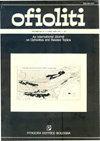IMMOBILE TRACE ELEMENT SYSTEMATICS OF OCEANIC ISLAND BASALTS: THE ROLE OF OCEANIC LITHOSPHERE IN CREATING THE GEOCHEMICAL DIVERSITY
IF 1.3
4区 地球科学
Q2 GEOLOGY
引用次数: 10
Abstract
The Earth’s mantle is known to be heterogeneous at different scales, which has been generally linked to the presence of diverse mantle reservoirs, some of which are believed to have remained isolated for long periods of time. When oceanic island basalts (OIBs) are subdivided into five distinct end-member groups on the basis of Sr-Nd-Pb isotope systematics, which include DM, EM1, EM2, HIMU and C, trace element systematics do not appear to be effective discriminators as isotopes, though an end-member signature may become dominant relative to others within a specific ratio range. Melting of a lithologically heterogeneous source or melting of distinct sources, which is followed by melt mixing, appears to be an important mechanism in creating variable geochemi- cal signatures in OIB genesis. Ratio-based trace element modeling suggests that sole involvement of eclogitic components cannot explain the entire elemental variation observed in OIBs; a peridotitic component must have been involved in the genesis of all types of end-member signatures. Combined trace element and isotope systematics are consistent with the involvement of metasomatized oceanic lithosphere (crust + lithospheric mantle) with/without sediments. This mechanism, which involves slab components uprising within the plumes, may also have been the main reason causing the geochemical diversity in the Tethyan mantle.海洋岛屿玄武岩的不动微量元素系统:海洋岩石圈在地球化学多样性形成中的作用
众所周知,地球的地幔在不同的尺度上是不均匀的,这通常与不同的地幔储层的存在有关,其中一些被认为在很长一段时间内保持孤立。当海洋岛屿玄武岩(OIBs)在Sr-Nd-Pb同位素系统(包括DM、EM1、EM2、HIMU和C)的基础上被细分为5个不同的端元群时,微量元素系统似乎不能作为有效的同位素鉴别器,尽管在特定的比率范围内,端元特征可能相对于其他特征占据主导地位。在OIB成因中,岩性非均质源或不同源的熔解,以及随后的熔体混合,似乎是形成可变地球化学特征的重要机制。基于比例的痕量元素模型表明,生态成分的单一参与不能解释oib中观察到的全部元素变化;橄榄岩成分一定参与了所有类型的端元特征的成因。微量元素和同位素组合系统与有/无沉积的交代洋岩石圈(地壳+岩石圈地幔)的参与一致。这种机制,包括地幔柱内部的板块成分上升,也可能是导致特提斯地幔地球化学多样性的主要原因。
本文章由计算机程序翻译,如有差异,请以英文原文为准。
求助全文
约1分钟内获得全文
求助全文
来源期刊

Ofioliti
地学-地质学
CiteScore
2.40
自引率
7.70%
发文量
1
期刊介绍:
Since 1976, Ofioliti provides an international forum for original contributions and reviews in the field of the geodynamics, petrology, geochemistry, biostratigraphy, stratigraphy, tectonics and paleogeography applied to ophiolitic terrains and modern oceanic lithosphere, including their sedimentary cover. Studies of topics such as geodynamics of the mantle, the evolution of orogens including ophiolites and paleoceanography are also welcome
 求助内容:
求助内容: 应助结果提醒方式:
应助结果提醒方式:


